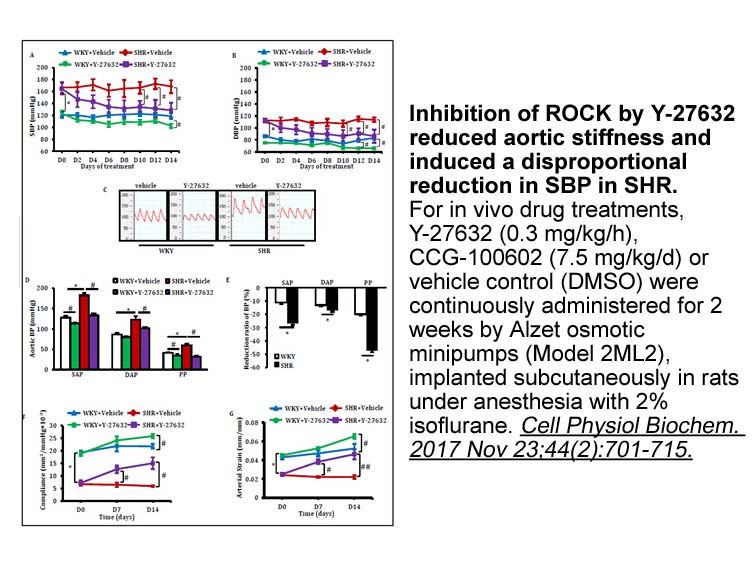Archives
The rescue of the behavioral deficit was associated with a
The rescue of the behavioral deficit was associated with a significant reduction in the levels of both soluble and insoluble Aβ peptides and their deposition in the Cell Counting Kit-8 of the same animals. In search for the mechanism behind the reduced amyloidosis, we assessed APP  metabolism. Confirming previous reports (21), we found a significant reduction in the stead
metabolism. Confirming previous reports (21), we found a significant reduction in the stead y state levels of BACE-1 and its cleavage product sAPPβ upon PD146176 treatment. By contrast, no differences between the two groups were noted for APP, α-secretase, γ-secretase, APOE, and IDE protein levels.
Based on the observation that in the treated mice there was a reduction in the insoluble and proaggregatory form of tau despite an increase in the soluble fraction, we hypothesized an involvement of clearing mechanisms in this pharmacological effect. For this reason, next we assessed several markers of autophagy activation in the brain of the two groups of mice. Consistent with our hypothesis, we noted that compared with controls, brains from treated mice had a significant increase in the steady state levels of ATG12-5 and the LC3B2/1 ratios, which are established biochemical markers of autophagy activation. We realize that in theory the autophagy activation in the treated mice could be caused by an action of the drug directly on the autophagy pathway and not via lipoxygenase inhibition. However, we think that this is not the case based on the similarity of the results between brains from drug-treated and 12/15-LO genetically deficient mice. The latter had a significant activation of autophagy compared to controls, supporting the hypothesis that the autophagy modulatory action of PD146176 depends on the pharmacologic blockade of the enzyme activity. Interestingly, this conclusion is in agreement with previous observations showing a direct influence of 12/15-LO on autophagy outside of the central nervous system (22, 23).
y state levels of BACE-1 and its cleavage product sAPPβ upon PD146176 treatment. By contrast, no differences between the two groups were noted for APP, α-secretase, γ-secretase, APOE, and IDE protein levels.
Based on the observation that in the treated mice there was a reduction in the insoluble and proaggregatory form of tau despite an increase in the soluble fraction, we hypothesized an involvement of clearing mechanisms in this pharmacological effect. For this reason, next we assessed several markers of autophagy activation in the brain of the two groups of mice. Consistent with our hypothesis, we noted that compared with controls, brains from treated mice had a significant increase in the steady state levels of ATG12-5 and the LC3B2/1 ratios, which are established biochemical markers of autophagy activation. We realize that in theory the autophagy activation in the treated mice could be caused by an action of the drug directly on the autophagy pathway and not via lipoxygenase inhibition. However, we think that this is not the case based on the similarity of the results between brains from drug-treated and 12/15-LO genetically deficient mice. The latter had a significant activation of autophagy compared to controls, supporting the hypothesis that the autophagy modulatory action of PD146176 depends on the pharmacologic blockade of the enzyme activity. Interestingly, this conclusion is in agreement with previous observations showing a direct influence of 12/15-LO on autophagy outside of the central nervous system (22, 23).
Acknowledgments and Disclosures